How an epic series on Asia's wildlife was filmed
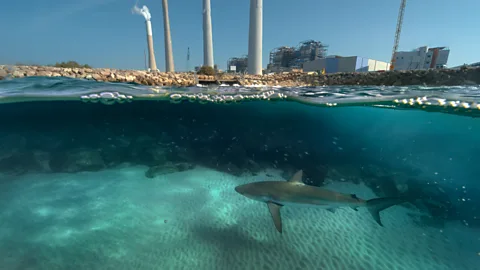 BBC Studios
BBC StudiosFilming the BBC's landmark series Asia took its crew on a four-year-long odyssey from the open ocean to the "roof of the world".
From frozen mountains to parched deserts, and lush tropical rainforest to vast grassland steppes – Asia is Earth's largest continent and home to an incredible array of environments.
Perhaps because of that sheer size and variety, until last year the BBC had never devoted a wildlife series entirely to it. The vastness, the crowded megacities and the extreme diversity of environments makes it harder to encapsule in a handful of episodes.
The Natural History Unit's landmark series Asia took four years to make. "Many parts of Asia are extremely remote, largely unknown, or frequently off-limits," producer Matthew Wright says. "Its wildlife is less well-studied than that of Africa and the Americas, so we had fewer leads to go on when we started our research.”
"We started by scouring scientific papers, books, websites and social media looking for stories. We spoke to colleagues, conservationists and tour guides too. Once running orders were drawn up, we spent two years and over 2,500 days filming," said Wright.
The team captured everything from reef sharks hunting bright Moorish idol fish in the Pacific Ocean to the world's largest goats living amid spectacular scenery in Pakistan. They tracked elephants through dense tea plantations in India and spied on huge monitor lizards living in the heart of one of Asia's biggest cities, Bangkok.
Here, we look at some of the behind-the-scenes images captured by the Asia crew during the series' epic production.
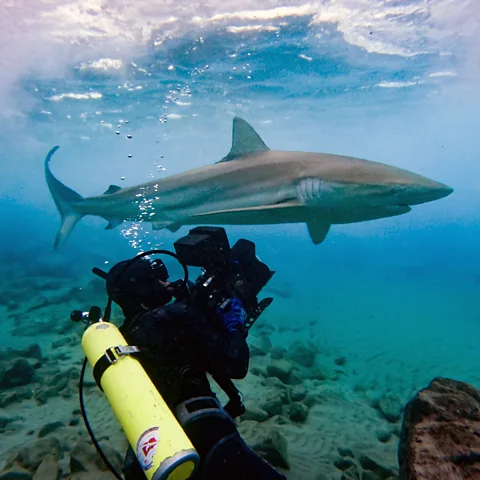 James Loudon/ BBC Studios
James Loudon/ BBC StudiosThe crew had to work out how to film reef sharks chasing after Moorish idols, a brightly coloured fish species, in the Pacific Ocean. The sharks are fast moving and too dangerous to film at close quarters when in hunting mode.
 BBC Studios
BBC StudiosWhat's more, the Moorish idols themselves were fast swimmers, clocking some 10mph (16km/h). Researcher Seth Daood says the team created a retractable pole that could be dipped into the water when needed and pulled up when the boat had to increase speed to catch up with the hunt.
Using the pole alongside drones and other camera crew swimming close to the boat, the team captured an hour of footage as the sharks reduced the shoal of hundreds of fish to almost nothing.
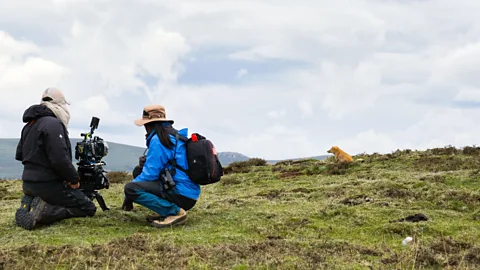 Joshua Cheng/ BBC Studios
Joshua Cheng/ BBC StudiosThe Asia team travelled to Qinghai province, in the west of China, to shoot the enigmatic fox on highland meadows nearly 4.5km (14,800ft) high. The crew needed three days to acclimatise to the altitude and head out to find a female fox that had been filmed by the team before.
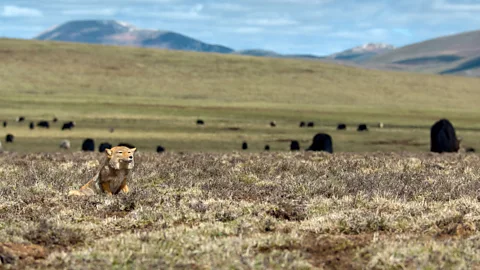 BBC Studios
BBC StudiosThe fox had learned not to see the team as a threat, says researcher Joshua Chen. "There were times when we were sitting on the grass, and she came around, and steadied herself into her sleeping position. She slept with her back to us, leaving us with the sense that she trusted us completely," he says.
The fox had given birth to a litter of cubs and spent much of the time hunting pika, small rodents, on the pasture. She used a variety of techniques, including using the bodies of lumbering yaks as cover, and the crew witnessed many successful hunts.
 Darryl MacDonald/ BBC Studios
Darryl MacDonald/ BBC StudiosIn another high-up pocket of the Asian continent, the team returned time and time again to capture not hunting wildlife but a meteorological oddity.
The Khareef is a monsoon rain system that visits the Dhofar Mountains in Oman. Moist air blown in from the sea becomes trapped by the peaks and forms fog; the fog sheds water droplets onto the surrounding slopes, resulting in massive plant growth. Drones were an invaluable tool in capturing this elemental moment.
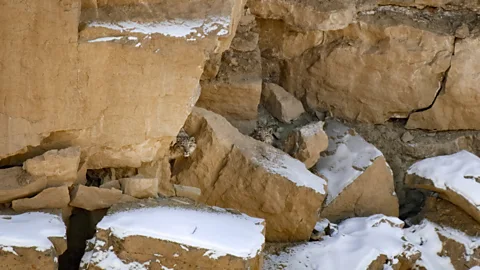 BBC Studios
BBC StudiosHigh in the Indian Himalayas, the village of Kibber has been the site of a remarkable upturn in an alpine predator's fortunes.
Over the past 15 years, conversationists have had a plan: raise the number of the indigenous blue sheep, and the endangered snow leopards will be less inclined to attack local villagers' livestock. The survival of these little-seen big cats, evolved to hunt on precipitous slopes, is now a cause of celebration for locals who once feared them.
 BBC Studios
BBC StudiosIn the third episode of the series, The Frozen North, the production team travelled to the vast frozen expanses of Asia's barely populated northern regions. Here, wildlife exists in bitterly cold temperatures for much of the year.
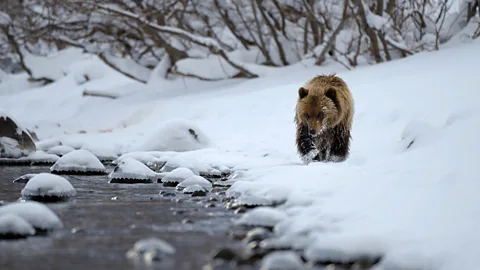 BBC Studios
BBC StudiosOne place the team ventured to was far-eastern Siberia. The region, which constitutes a great deal of Russia east of the Ural Mountains, is home to some of the world's largest land-based predators, including the Siberian tiger and East Siberian brown bears.
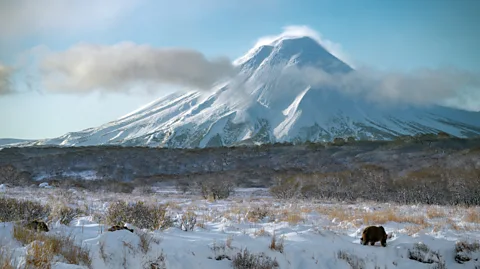 BBC Studios
BBC StudiosIn the remote Kamchatka Peninsula, where huge volcanoes dominate the landscape, the team filmed bears preparing for their winter hibernation. The bears fatten up for their long winter sleep by gorging on salmon which mass in lakes formed from the craters made by volcanic eruptions long ago.
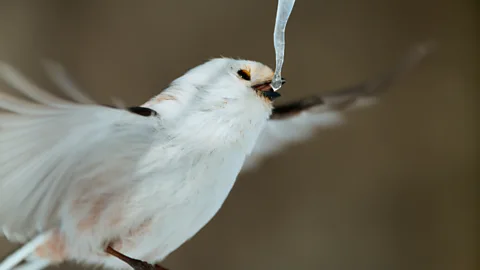 BBC Studios
BBC StudiosNot all of the wildlife in this expanse of ice and snow is so large, however. Some small birds remain as winter descends. The long-tailed tit has learned to feed on the sugar-rich sap which oozes from trees after deer have fed on its bark. The sap can be a life-saver for birds who would otherwise find slim pickings in the snow-covered wilderness.
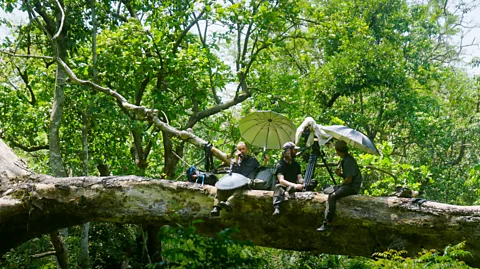 Niraj Karki/ BBC Studios
Niraj Karki/ BBC StudiosIn the fourth episode, Tangled Worlds, the series looked at some of the life found in Asia's forests and jungles. Here, some of the crew take a break on a fallen tree while filming elusive rhinoceros in the jungles of Nepal.
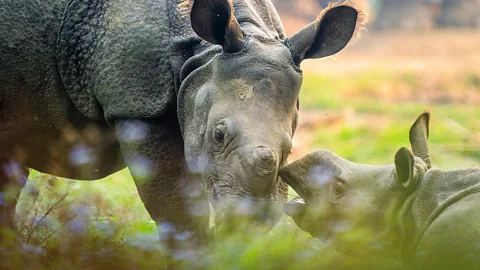 Niraj Karki/ BBC Studios
Niraj Karki/ BBC StudiosThe greater one-horned rhinoceros, also known as the Indian rhinoceros, is the second-largest species of rhino in the world and can be found in forests of Nepal and India but once ranged across the entire Indian subcontinent. Shrinking habitat amid rising human populations and poaching have caused numbers to crash; recent protection, however, has bolstered numbers.
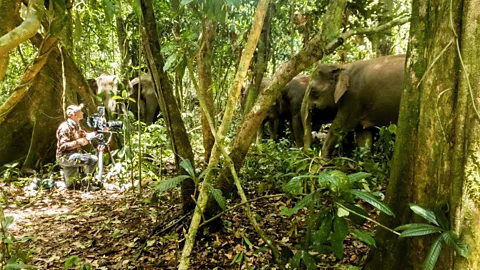 Ed Anderson/ BBC Studios
Ed Anderson/ BBC StudiosIn the forests of Sabah, in Malaysian Borneo, cameraman Will Foster-Grundy filmed forest elephants at close quarters. The elephants, much smaller than the Asian and African species, range across the rainforest-covered island, though numbers have dwindled to fewer than 1,500 individuals.
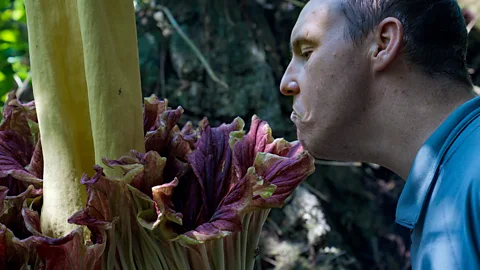 BBC Studios
BBC StudiosFilming in hot, humid locations in impenetrable jungle are reliable challenges for film crews in such conditions, but the Asia team had another: gut-wrenching smells. The titan arum, for instance, is the largest unbranched flowering plant on Earth, found in jungles in Sumatra in Indonesia. The large flower blooms for only a short time, so the plant makes itself as attractive as possible to insects – its scent has been likened to the odour of rotting meat.
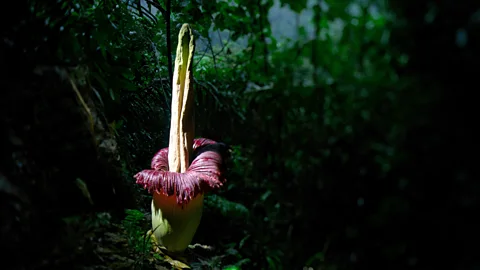 BBC Studios
BBC StudiosThe titan arum does more than just smell bad in an effort to attract pollinators; the red colour of the flower and its texture also mimics the appearance of meat. When blooming, the plant's spadix – a fleshy stem in the middle of the flower – heats up until it is as hot as a human body.
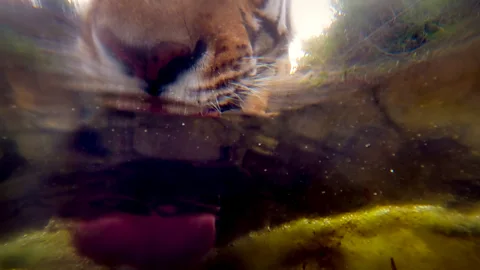 BBC Studios
BBC StudiosIn the Indian city of Bhopal, the team captured on film tigers that coexist with the bustling city's human population. Bhopal is something of a success story, with the highest tiger acceptance rate of any city in India. Tigers keep to themselves during the day, resting in caves and forested areas, mostly coming out at night.
The team had to set up cameras across the city in order to film the Bhopal tigers, including at the water holes where the tigers would drink every evening. Cameras and lights had to be reinstalled after curious cubs and langur monkeys knocked them down. This angle gave the team a fish's eye view of a thirsty tiger.
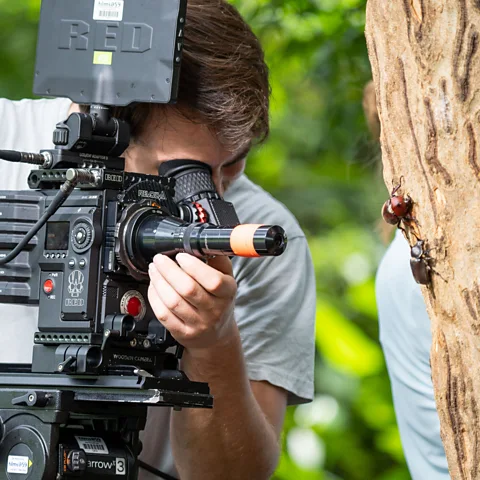 Henry Lin/ BBC Studios
Henry Lin/ BBC StudiosDuring filming for the fifth episode, called Crowded Continent, the team looked at how the continent's wildlife has had to adapt to Asia's enormous human population. Taiwanese capital Taipei, cameraman Oliver Mueller filmed rhino beetles duelling on a tree trunk.
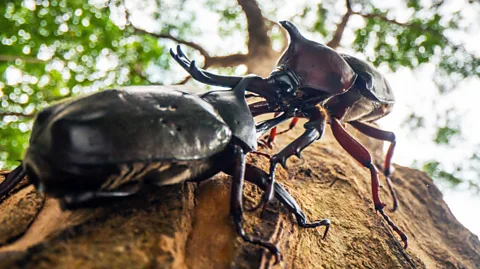 Henry Lin/ BBC Studios
Henry Lin/ BBC StudiosThe close filming gave the series a beetle's-eye view of the struggles between competing males, who battle for mating rights – the loser gets flung off the trunk and has to seek a mate elsewhere.
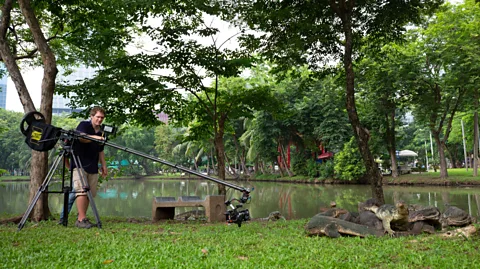 Alex Tivenan/ BBC Studios
Alex Tivenan/ BBC StudiosEven some of Asia's biggest cities – like the Thai capital Bangkok – play host to exotic wildlife. One of Asia's biggest reptiles, the menacing monitor lizard, has adapted to the sprawling mega-city's waterways and lakes.
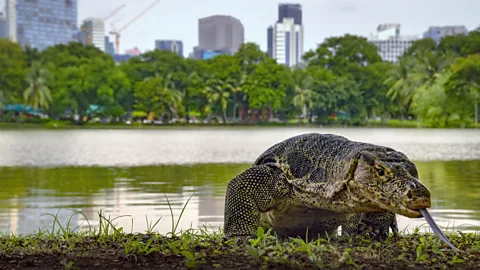 BBC Studios
BBC StudiosFilming the giant lizards in Bangkok was a tall task. "The nature of this shoot was incredibly dynamic – there was no sitting and waiting, instead the crew took more of a hunting and gathering approach," says Seth Daood. "With a walkie-talkie communications system, the whole team knew at any moment they could receive a call to relocate within the park. We used three trolleys to help us move all our heavy gear around as quickly as possible."
Spotters radioed the locations of active lizards, but the film crew had to contend with frequent rainstorms and even lightning strikes that made recording too dangerous. But their patience was rewarded with more than six hours of footage – including a monitor catching a giant catfish.
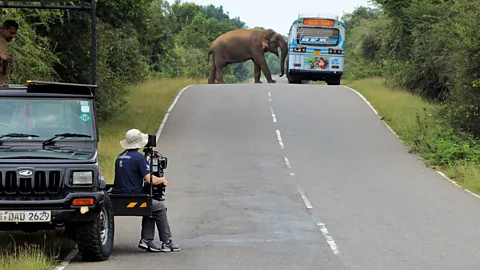 BBC Studios
BBC StudiosPerhaps the most viral moment of the entire show concerned the brazen behaviour of enterprising elephants on the island of Sri Lanka.
The elephants, including a huge 40-year-old male called Raja, had learned that the buses that ply the road are a low-effort source of snacks. Unlike more aggressive younger elephants, the quiet Raja has learned that a gentle approach earns more rewards, says researcher Daood.
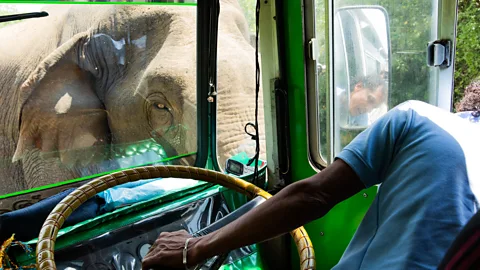 Justine Evans/ BBC Studios
Justine Evans/ BBC StudiosRaja would block the bus's path and – very politely – shake the passengers down for a treat (like melons or coconuts), poking his trunk through the open door or windows. Sated, he'd then allow the bus to be on its way.
Raja's genteel robberies, however, point to a common issue for much of Asia's wildlife. Increasing pressure from rising human populations mean wild habitats are shrinking every year. Only 30% of Sri Lanka's elephants, for instance, live in protected or unpopulated areas.
You can see more stories and clips from the Asia series here.
--
If you liked this story, sign up for The Essential List newsletter – a handpicked selection of features, videos and can't-miss news, delivered to your inbox twice a week.
For more science, technology, environment and health stories from the BBC, follow us on Facebook, X and Instagram.
